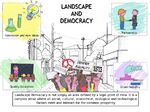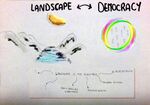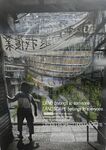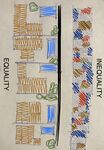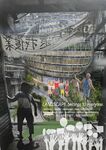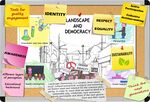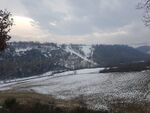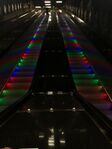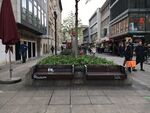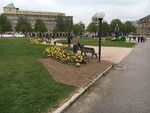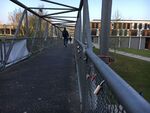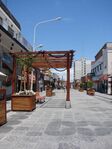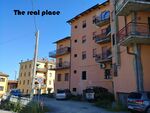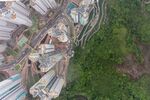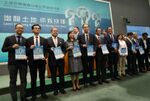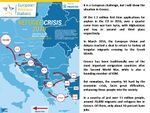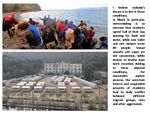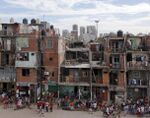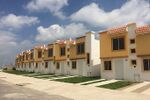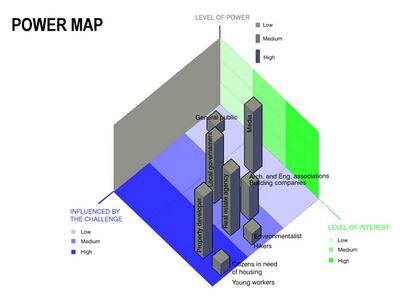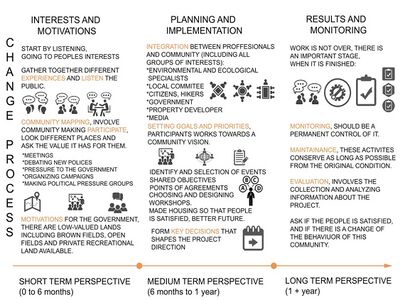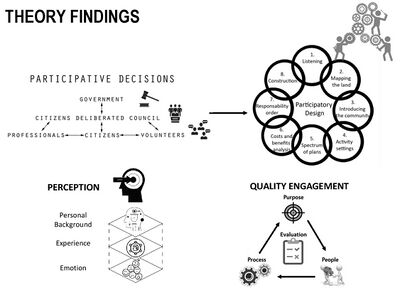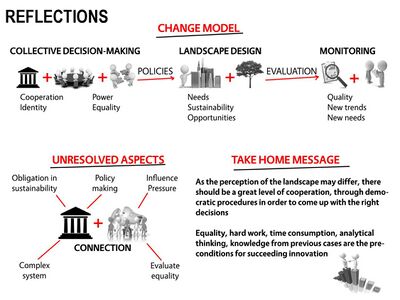LED Online Seminar 2019 - Working Group 2: Difference between revisions
Vicky.moreno (talk | contribs) |
Vicky.moreno (talk | contribs) |
||
| (28 intermediate revisions by 5 users not shown) | |||
| Line 82: | Line 82: | ||
'''Author 2: Ho Ching Leung (Nicole)''' | '''Author 2: Ho Ching Leung (Nicole)''' | ||
* # | * #Parallelogram of Forces in Planning: lies between officials in power, construction industry speculators, civic stakeholders and people affected by the measures undertaken. Decision-makers are to hem technical planning in two sides, on one side by democratizition and participation, and on the other side on technocratic terms. (''Burckhardt, Lucius (1974): Who plans the planning? in: Fezer/Schmitz (Eds.) Rethinking Man-made Environments (2012)'') | ||
* # | * #Case Study Method: A case study is a well-documented and systematic examination of the process, decision-making and outcome of a project, which is undertaken for the purpose of informing future practice, policy, theory and education. It is useful in retaining holistic and meaningful characteristics of real life situation and can be applied in participatory planning. Six major potential benefits of case studies include teaching, research, practice, theory building ,criticism and communication and outreach. Methodologies of case study vary case by case but a simple example illustrated starts off by outlining basic information of the project, context, history, site analysis, genesis of the project, role of landscape architects in the project, maintenance and management, user analysis, limitations, future issues, recommendations and implications, and future research issues. (''Francis, Mark: A Case Study Method for Landscape Architecture'') | ||
* # | * #Landscape is a Construct: Landscape consists of many different layers - visual layer of colours, natural or technological production infrastructures and the social aspects. Landscape is unique in a way that none of us is able to look at the landscape through another person’s eyes. Perceptions of landscape lie in our subconscious knowledge. Utility and beauty of landscape is identified based on personal background and experience. (''Burckhardt, Lucius (1979): Why is landscape beautiful? in: Fezer/Schmitz (Eds.) Rethinking Man-made Environments (2012)'') | ||
| Line 171: | Line 171: | ||
=== Step 5: Reflection === | === Step 5: Reflection === | ||
The landscape consists of different layers and it is perceived differently from every person and his background. These are not only the visual ones (colors, constructions), but also the social layer, where equality in all aspects plays a huge role. | |||
The decisions concerning the landscape, should be made in democratic ways, stepping back from strong first feelings (without suppressing emotive), understanding the different sectors of society and setting strategic planning and visioning, through collective decision making. | |||
The importance of identity in the landscape is highlighted by well-documented and systematic examination of process study cases, where landscape is expressed based on a community dynamic. | |||
A variety of very informative case studies teaches us about the outcomes of projects, the benefits of democratization and participation in a design process and the ways of achieving desired improvements using active participation. | |||
Quality engagement includes four main principles: purpose, people, process and evaluation. | |||
We know that our cities respect the past and history, but sustainability will require to recreate and re-design our societies, giving up rigid past positions and move forward with flexibility. No-one have to stay behind. The goal is to look at what is best for all and this is achievable when people have a strong sense of community and tend to respond positively to solve community problems. | |||
As a reflection from all the readings, the world we are living in right now is getting more and more culturally diverse. As landscape architects, it is important to understand the users, respect history and culture, and consider sustainability in order to achieve democracy in landscapes. | |||
=== Step 6: Revised manifestoes === | === Step 6: Revised manifestoes === | ||
| Line 178: | Line 185: | ||
<gallery caption=" " widths="150px" heights="150px" perrow="5"> | <gallery caption=" " widths="150px" heights="150px" perrow="5"> | ||
Image: | Image:Revised_manifesto_giulia.jpg|Giulia's revised manifesto | ||
Image: | Image:Nicole revised manifesto 20190624.jpg|Nicole's updated manifesto | ||
Image: | Image:Javier revised manifesto.jpg|Javier's updated manifesto | ||
Image: | Image:RevisedManifesto1 Moreno.jpg|Vicky's updated manifesto | ||
</gallery> | </gallery> | ||
| Line 217: | Line 224: | ||
=== Reflection === | === Reflection === | ||
* | * The power of man over landscape is a core attention subject | ||
* | * Despite no people appear in the chosen landscapes, the focus of interest is human centric | ||
* | * Sentimental or objective way of understanding the landscape, we were able to find more similarities than differences in our perceptions | ||
Conclusion: | Conclusion: | ||
* .. | * ‘Landscape democracy’ is a subjective term. People from different cultural backgrounds view it in different ways. It is also subjected to personal attachments and understandings of the landscape. | ||
=== Your references === | === Your references === | ||
* https://www.freundeskreis-hahn-kornwestheim.de/kunst/ | |||
* https://www.sciencedirect.com/science/article/pii/0169204688900400 | |||
* https://de.wikipedia.org/wiki/Kornwestheim | |||
* ... | * ... | ||
== Assignment 3 - Role Play on Landscape Democracy "movers and shakers" == | |||
Wasiliki Moreno: James Rojas | |||
Giulia Gazzotti: Alessandra Orofino | |||
Nicole Leung: Walter Hood | |||
Javier Tirone: Henry Sanoff | |||
*You can read more details about this assignment [[Assignment_3:_Role_Play_on_Landscape_Democracy_"movers_and_shakers"_(2019)|here]] | *You can read more details about this assignment [[Assignment_3:_Role_Play_on_Landscape_Democracy_"movers_and_shakers"_(2019)|here]] | ||
| Line 252: | Line 265: | ||
=== Landscape Democracy Challenge 2 === | === Landscape Democracy Challenge 2 === | ||
<gallery caption=" | <gallery caption="Country Park or Housing? - Ho Ching Leung (Nicole)" widths="150px" heights="150px" perrow="5"> | ||
Image: | Image:Nicole Assignment 4 1.jpeg|This case is chosen because housing is the number one problem in Hong Kong. While housing is insufficient and unaffordable, the government is proposing to prioritise country parks area for housing development, which creates conflicts in socio-ecological aspect. | ||
Image: | Image:Nicole Assignment 4 2.jpeg|It is doubted if it is appropriate to prioritise country park areas for housing while there are other low-valued lands including brown fields, open fields and private recreational land available. | ||
Image: | Image:Nicole Assignment 4 3.jpeg|There are objections to the proposal. A task force was set up for research but their expertise were highly doubted and their ways of consultation were considered short and superficial. | ||
Image: | Image:Nicole Assignment 4 4.jpg|Actors include ocal government, property developer, environmental specialist, ecological specialist, hikers, general public and media. | ||
</gallery> | </gallery> | ||
'''Your references:''' | '''Your references:''' | ||
*... | *https://www.hk01.com/01%E8%A7%80%E9%BB%9E/203923/%E6%88%90%E6%9C%AC%E9%AB%98%E6%95%88%E7%8E%87%E4%BD%8E-%E7%99%BC%E5%B1%95%E9%83%8A%E9%87%8E%E5%85%AC%E5%9C%92-%E4%B8%8B%E4%B8%8B%E7%AD%96 | ||
*.. | *https://www.scmp.com/sport/outdoor/trail-running/article/2155169/hong-kong-government-will-develop-country-parks-unless | ||
*https://www.scmp.com/news/hong-kong/hong-kong-economy/article/2180196/task-force-land-supply-has-been-dogged-accusations | |||
=== Landscape Democracy Challenge 3 === | === Landscape Democracy Challenge 3 === | ||
<gallery caption="Beyond capacity hotspots" widths="150px" heights="150px" perrow="5"> | <gallery caption="Beyond capacity hotspots - Moreno Wasiliki" widths="150px" heights="150px" perrow="5"> | ||
Image:Why.Moreno.JPG|caption: why did you select this case? | Image:Why.Moreno.JPG|caption: why did you select this case? | ||
Image:What1.Moreno.JPG|caption: what is the issue/conflict (1) | Image:What1.Moreno.JPG|caption: what is the issue/conflict (1) | ||
| Line 276: | Line 290: | ||
=== Landscape Democracy Challenge 4 === | === Landscape Democracy Challenge 4 === | ||
<gallery caption=" | <gallery caption="Decent Houses, Javier Tirone" widths="150px" heights="150px" perrow="5"> | ||
Image: | Image:Tirone why 2.jpg|Housing crisis in Argentina is a very important conflict, that year after year, is increasing. Housing deficit is about 3.5 million, in which this amount increases 36 thousands homes per year and not only affect lower classes but also middles ones. | ||
Image: | Moreover in the latest years, as there is a concentrated density in the cities as a result of a non planned growth, the access to the principal services such as drinkable water, gas and sewer has not improved. Argentinian democracy was not able to give answers to one of the oldest problems that it had. | ||
Image: | Image:Tirone what 3.jpg|An inadequate house it is characterized by the low quality of the construction, the lack of basic services, the precarious situation of the urban attributes of the neighborhoods; which, as a whole, entails a high social and economic vulnerability, in which it face natural risks and various types of diseases and illnesses associated with poor housing and living conditions. Therefore in Argentina nowadays we are about 44, 5 millions of citizens, which one third from this population has this problems and live in precarious ways, this number has increased according to 2010 census. Using statistics helps to have a synthesized notion of what is happening, but seeing the number of homes as a isolated number would be not a fair study of the problem. In a country where the concentration of wealth is present in each of its corners, the construction of new housing does not imply the expansion of the number of owners or new families who could get their own home. | ||
Image:Casas-680x454.jpg|In the last decade housing budget has increased in Argentina , this does not means that it is better than before, the housing deficit continues. This forced the government and population from every province and city to work together and rethink programs that led to successful and efficient policies which should be applied in a sustained and sustainable manner. | |||
</gallery> | </gallery> | ||
'''Your references:''' | '''Your references:''' | ||
*... | *https://www.viviendadigna.org.ar/ | ||
*... | *https://www.lanacion.com.ar/editoriales/la-dignidad-que-brinda-un-techo-nid2253951 | ||
*https://www.infobae.com/2015/06/05/1733496-informe-deficit-habitacional-la-argentina/ | |||
== Your Democratic Change Process == | |||
<gallery caption= "Challenge No 2. Country Park or Housing?" widths="600px" heights="300px" perrow="1"> | |||
Image: 1.challenge.jpg |caption: Power Map | |||
<gallery caption=" | Image:2.challenge.jpg|caption: Change Process | ||
Image: | Image:3.challenge.jpg|caption: Theory Findings | ||
Image: | Image:4.challenge.jpg|caption: Reflection | ||
Image: | |||
Image: | |||
</gallery> | </gallery> | ||
== Reflection == | |||
* | * How the collective decision-making between the government, the responsible decision-maker groups and the public with values like cooperation, identity recognition, equality and power can come up with policies for landscape designing. | ||
* | * The landscape design should not promote human power over nature and should be made according to principles concerning sustainability, community’s needs and opportunities given in the area. | ||
* | * Evaluation is an important part of the procedure, detecting quality open to new ideas. | ||
Conclusion: | Conclusion: | ||
* | * As the perception of the landscape may differ from person to person, there should be a great level of cooperation, through democratic procedures in order to come up with the right decisions for the right needs. | ||
* The preconditions for succeeding innovation is equality, hard work, time consumption and dedication, analytical thinking, experience and knowledge gained from previous cases. | |||
* | |||
== Your references == | |||
* Chosen list of our readings | |||
* | |||
---- | ---- | ||
[[Category:Landscape Democracy Working Group 2019]] | [[Category:Landscape Democracy Working Group 2019]] | ||
Latest revision as of 17:33, 3 July 2019
--> Back to working group overview
Dear working group members. This is your group page and you will be completing the template gradually as we move through the seminar. Good luck and enjoy your collaboration!
Assignment 1 - Reading and Synthesizing Core Terminology
- You can read more details about this assignment here
- Readings are accessible via the resources page
Step 1: Your Landscape Democracy Manifestoes
Step 2: Define your readings
- Please add your readings selection for the terminology exercise before April 24:
A: Landscape and Democracy
Burckhardt, Lucius (1979): Why is landscape beautiful? in: Fezer/Schmitz (Eds.) Rethinking Man-made Environments (2012) [Nicole]
The New Urban Agenda, Quito Declaration on Sustainable Cities and Human Settlements for All, UN resolution from December 2016 [Giulia]
B: Concepts of Participation
Burckhardt, Lucius (1974): Who plans the planning? in: Fezer/Schmitz (Eds.) Rethinking Man-made Environments (2012) [Nicole]
Sanoff, Henry (2014): Multiple Views of Participatory Design, Focus [Javier]
Day, Christopher (2002): Consensus Design, Architectural Press [Vicky]
C: Community and Identity
Francis, Mark: A Case Study Method for Landscape Architecture [Nicole]
Welk Von Mossner, Alexa (2014): Cinematic Landscapes, In: Topos, No. 88, 2014. [Giulia]
Hester, Randolph (2006): Design for Ecological Democracy, The MIT Press [Javier]
D: Designing
Hester, Randolph: Life, Liberty and the Pursuit of Sustainable Happiness [Giulia]
Kot, Douglas and Ruggeri, Deni: Westport Case Study [Vicky]
E: Communicating a Vision
Boer, Florian, Jens Jorritsma, and Dirk van Peijpe. 2010. De Urbanisten and the wondrous water square. Rotterdam: 010 Publishers. Webpage and Video. [Javier]
Online toolbox with the most important engagement tools and their descriptions. https://www.publicengagement.ac.uk/do-it/techniquesapproaches [Vicky]
Steps 3 and 4: Concepts Selection and definition
- Each group member selects three relevant concepts derived from his/her readings and synthesize them/publish them on the wiki by May 15, 2019
- Group members reflect within their groups and define their chosen concepts into a shared definition to be posted on the wiki by June 12, 2019.
- Other group members will be able to comment on the definitions until June 30, 2019
- Each group will also report on their process to come to a set of shared definitions of key landscape democracy concepts on the wiki documentation until July 12, 2019
Concepts and definitions
Author 1: Giulia Gazzotti
- #NewUrbanAgenda: cultural diversity is a resource for humanmankind; cities for all; equal rights and opportunities; equal pay for equal work; protect and conserve the biodiversity; link people, places and goods; leave no one behind
- #Wrongside: the landscape is used to express the racial, gender and economic power dynamics
- #Wearelost: resources convey status and have become a primary basis of our personal identity and security; no community connection; sustainability will require us to reformulate our society; cities need to be fair with their past and history; create large spaces where we can live and buildings that are able to touch our spirit and enrich our lives; active participation
Author 2: Ho Ching Leung (Nicole)
- #Parallelogram of Forces in Planning: lies between officials in power, construction industry speculators, civic stakeholders and people affected by the measures undertaken. Decision-makers are to hem technical planning in two sides, on one side by democratizition and participation, and on the other side on technocratic terms. (Burckhardt, Lucius (1974): Who plans the planning? in: Fezer/Schmitz (Eds.) Rethinking Man-made Environments (2012))
- #Case Study Method: A case study is a well-documented and systematic examination of the process, decision-making and outcome of a project, which is undertaken for the purpose of informing future practice, policy, theory and education. It is useful in retaining holistic and meaningful characteristics of real life situation and can be applied in participatory planning. Six major potential benefits of case studies include teaching, research, practice, theory building ,criticism and communication and outreach. Methodologies of case study vary case by case but a simple example illustrated starts off by outlining basic information of the project, context, history, site analysis, genesis of the project, role of landscape architects in the project, maintenance and management, user analysis, limitations, future issues, recommendations and implications, and future research issues. (Francis, Mark: A Case Study Method for Landscape Architecture)
- #Landscape is a Construct: Landscape consists of many different layers - visual layer of colours, natural or technological production infrastructures and the social aspects. Landscape is unique in a way that none of us is able to look at the landscape through another person’s eyes. Perceptions of landscape lie in our subconscious knowledge. Utility and beauty of landscape is identified based on personal background and experience. (Burckhardt, Lucius (1979): Why is landscape beautiful? in: Fezer/Schmitz (Eds.) Rethinking Man-made Environments (2012))
Author 3: Moreno Vicky
- Day, Christopher (2002): Consensus Design, Architectural Press
Definition of consensus = ‘general agreement; collective opinion [Latin = agreement (as consent)]. The right of the majority cannot be ethically justified, while debate or arguing can lead to speedy decisions. Compromising, means abandoning or de-prioritizing what you want, whether the principles you stand for. In some cases, this peace can be more important. In architecture though, compromise is neither necessary nor desirable. Two step process: 1.Give up rigid past positions and move forward with flexibility. 2.Transcend own individual gain outlooks to look at what is best for all. Forward-looking inspiration and holistic consciousness. Laudable ethic, invariably improves things for each individual. Consensus is not an automatic state. We may start with full agreement (rare). A more democratic way is to decide a chain of decisions to vote. Step back from the ideas, opinions and strong feelings most people start with. Emotive shouldn’t be suppressed. Identify source, objectify issues emotions are knotted into. Agree the underlying essence of a project. Recognize what mood is appropriate. Effects of colour: ‘soulquality’.
- Kot, Douglas and Ruggeri, Deni: Westport Case Study
Participatory design in the small coastal community of Westport, California. Democratic design process as an instrument to help reclaim control over people's community and achieve the desired improvements. Residents participated actively in the design of their neighborhood, with the “Crafting Westport” 12 steps process:
• Listening - Questions to residents, asking about growth and change.
• Workshop - Verbal introduction focused on answering questions with regard to the meaning of community participation. PowerPoint presentation summarizing the inventory findings and the Listening interview results. And review, confirm and rank the potential goals, compile a list of priorities.
• Data - Establish the dialogue between residents and design team.
• Confirming Goals - Primary objective: establishment of supported priorities for the community, guiding the future actions. Defining the 5 most important actions to take for the future.
• Activity Mapping - residents cited and sketched activities associated with the existing centers of town, in a variety of locations around town, as a fantasy/self-hypnosis/visualization, rather than a drawing exercise.
• Program for the Pea Patch - Interactive game techniques for the “Pea Patch” and the school site. Involve participants in developing a program that could be used to measure the design alternatives. Defining activity needs.
• Walking Tour - Goals: Re-present the information in a spatial forum. Design opportunities experientially, rather than conceptually. Mapping activity patterns. Soliciting stories related to particular places. Feedback that could inform the design.
• The Alternative Plans - Residents priorities.
• Final Design - Establish needs of the residents, the character of town, the community’s way of life and the unique ecology of the place.
• “CRAFTING WESTPORT” - Iterative process and various degrees of users’ involvement and intensity. Idiosyncrasies of the community helped to adjust the process and became instrumental to its successful outcome.
• Westport’s Spatial Literacy - Important role of environment in the development of a strong sense of identity.
• The view from the inside - Different perceptions between outsiders and insiders of a community.
- Online toolbox with the most important engagement tools and their descriptions. https://www.publicengagement.ac.uk/do-it/techniquesapproaches
Public engagement describes the myriad of ways in which the activity and benefits of higher education and research can be shared with the public. Engagement is by definition a two-way process, involving interaction and listening, with the goal of generating mutual benefit. Quality engagement includes 4 principles.
• Purpose - What we are hoping to achieve. Building understanding and stimulating curiosity. Identifying and responding issues or topics. Seek to apply knowledge together. Consulting. Behaviour change.
• People - Understand the people you want to engage with, in order to ensure the intervention is fit for purpose. Figure out the type of partnership that could help in every work. Delivery team.
• Process - Presentation, Broadcast, Event, Writing, Encounter, Websites, Exhibit, etc.
• Evaluation - Quality engagement involves the strategic use of evaluation. Aims, approach, utilised methods , analysing and usage of data.
Think about your target audience by deciding who you want to engage with. Methods of engaging with policy makers. Basics of Project management: time, cost, scope. Main parts of Marketing: product, price, place, promotion. Different types of fundings.
Author 4: Tirone Javier
- #Multiple views of participatory design:
Participatory democracy; collective decision making decentralized different sectors of society, leads to persistent conflict at a national level, has invaded different areas of social life: industry, neighbourhoods, cities, etc.
Deliberated democracy; deficency when citizens work towards collective outcomes, however there are collective intelligence groups CDC, that shared ideas that comes out, agree or not in issues of public concern. CDC, groups that represents different parts of the society and express what they wanted, it increase the effectiveness of our democracy.
Sense of community ; face to face interactions, when people have a strong sense of community respond positevly to solve community problems, however they are likely to protect and improve places meaningful for them.
Strategic planning and visioning; dialogue between citizens and public officials to meet needs, participants are asked to strengthen and work toward community vision, setting goals and priorities, range of possible futures.
- #Design for ecological democracy
Landscape architecture; incorporate ecological practices in the built environment so the society have greater access to nature and natural processes. Humans need to form a relationship with ecology and democracy.
Categories: *impelling *enabling *resilient These three categories need to be incorporated and refers democracy to built environment. Example , Denmark , modern landscape architecture , shaped by natural elements , simple and well constructed.
- #Water plaza Rotterdam;
Participation of students, proffesors, church, residents, theatre.
From Roterdam floods, a real important problem, decided to do a Water storage and improvement of public space, making an empty square in a square with different functions and uses. Rainwater is filtered before running into the square.
Step 5: Reflection
The landscape consists of different layers and it is perceived differently from every person and his background. These are not only the visual ones (colors, constructions), but also the social layer, where equality in all aspects plays a huge role. The decisions concerning the landscape, should be made in democratic ways, stepping back from strong first feelings (without suppressing emotive), understanding the different sectors of society and setting strategic planning and visioning, through collective decision making. The importance of identity in the landscape is highlighted by well-documented and systematic examination of process study cases, where landscape is expressed based on a community dynamic. A variety of very informative case studies teaches us about the outcomes of projects, the benefits of democratization and participation in a design process and the ways of achieving desired improvements using active participation. Quality engagement includes four main principles: purpose, people, process and evaluation.
We know that our cities respect the past and history, but sustainability will require to recreate and re-design our societies, giving up rigid past positions and move forward with flexibility. No-one have to stay behind. The goal is to look at what is best for all and this is achievable when people have a strong sense of community and tend to respond positively to solve community problems.
As a reflection from all the readings, the world we are living in right now is getting more and more culturally diverse. As landscape architects, it is important to understand the users, respect history and culture, and consider sustainability in order to achieve democracy in landscapes.
Step 6: Revised manifestoes
- please look again at your initial manifestoes and update them with any new aspects/prespectives you have taken up during this seminar
Assignment 2 - Your Landscape Symbols
- You can read more details about this assignment here
Landscape Symbols Author 1: Vicky Moreno
The Salamander Stadtpark is located in the center of Kornwestheim, across the City Hall. The historical and cultural meaning of the Salamander Enterprise donation for the creation of this park is huge, with some statues and inscriptions all over the park, inviting you to search the history of Kornwestheim more. The symbolism of this act is obvious. Salamander contributed to innovation giving thousands of working spaces, increasing the economy of the district, creating green infrastructure and its actions have an impact to the citizens till today.
Salamander Stadtpark in Korwestheim owns an artificial lake. The three landscape elements of this park: water, meadow and woodland are creating an interesting contrast in a harmonious way of nature. But especially water as a vivid element, has a very special quality in landscape design. Depending on the season it is representing freedom, family values, cultural and well-being activities, and more or less the feeling of equality. In winter when the lake freezes, in the eyes of many, prevails a harmonic sense of peace. In conclusion, water in the landscape is viewed as a symbol synomymous with development, economic progress, modernization and national prestige.
This sculpture, located at the roundabout on Stuttgarterstraße and Lindenstrasse, in the entrance of Kornwestheim city, was created to honor the mechanical clergyman and genius Philipp Matthäus Hahn and it symbolizes the cohesion among all the different sciences and spirituality. Only with strong fundamentals can someone innovate, create and invent for the public and not only for personal profits.
Landscape Symbols Author 2: Giulia Gazzotti
The last picture is from Lund, Sweden, the place of my exchange for five months. I named it "Efficiency", because in Sweden, differently from my country, public things, paid with public money, work perfectly. The conclusion is that Democracy gives the chance to culture and people to express theirselves freely in the landscape and this is clearly shown in the three pictures. They are the proof of a completely different result on which we should reflect.
Landscape Symbols Auther 3: Nicole (Ho Ching Leung)
(48° 46' 30.732" N 9° 10' 40.068" E) Photo was taken in Schlossplatz, in the open space in one of the busiest shopping streets in Stuttgart. The landscape symbol identified is the graffiti on benches. Graffiti is not only perceived as a hip-hip culture but also a way for youngsters to express their opinions to the society in recent decades. It is a symbol of the integration of social democracy and public space.
(48° 46' 42.582" N 9° 10' 42.912" E) Photo was taken in Schlossplatz, Stuttgart. The photo symbolises human control over nature. Parts of the existing lawn were replaced with decorative flower beds as visual attractions to celebrate the upcoming Easter. It not only reflects the role of landscape in cultural celebrations, but also human’s manipulation to nature, questioning the degree of democracy of the landscape itself.
(48° 44' 42.588" N 9° 6' 9.34" E) Photo was taken in University of Stuttgart. The photo reflects how different users perceive the same piece of landscape and give different symbolic meanings to it. This bridge with love-locks might be a romantic place for couples but just a normal bridge for single people. It reflects that the unique symbolic meanings of each landscape subject to users’ definitions and perceptions.
Landscape Symbols Author 4: Javier (Tirone)
I live in Pilar, Buenos Aires, Argentina. It is a place where the contrast between classes is notorious. This first picture shows a higher class family who has private security and amenities. This symobolizes how a big part of the society is excluded, by these private neighbourhoods, due to their incapacity of affording these services.
Reflection
- The power of man over landscape is a core attention subject
- Despite no people appear in the chosen landscapes, the focus of interest is human centric
- Sentimental or objective way of understanding the landscape, we were able to find more similarities than differences in our perceptions
Conclusion:
- ‘Landscape democracy’ is a subjective term. People from different cultural backgrounds view it in different ways. It is also subjected to personal attachments and understandings of the landscape.
Your references
- https://www.freundeskreis-hahn-kornwestheim.de/kunst/
- https://www.sciencedirect.com/science/article/pii/0169204688900400
- https://de.wikipedia.org/wiki/Kornwestheim
- ...
Assignment 3 - Role Play on Landscape Democracy "movers and shakers"
Wasiliki Moreno: James Rojas
Giulia Gazzotti: Alessandra Orofino
Nicole Leung: Walter Hood
Javier Tirone: Henry Sanoff
- You can read more details about this assignment here
Assignment 4 - Your Landscape Democracy Challenge
- You can read more details about this assignment here
- Each group member will specify a landscape democracy challenge in his/her environment
Landscape Democracy Challenge 1
- A new Church with Old Inhabitans-Giulia Gazzotti
caption: I live in a very small district called Veggia, where inhabitants are mostly old and have lived there for their entire life. Some years ago, close to this small district, it has been instituied a new reception centre for immgrants that has started to have an impact on the nearest districts, as mine.
caption: The new community of arabs in my district has increased and a kind of “ghetto” has been created. One year ago, they asked for an arabic Church, a Mosche, were they could pray and profess their faith. A huge rebellion from residents started immediately because it was perceived as an invasive act, mining our safety and daily life.
caption: Actually, my small district is an example of many cases that are spreading in all Italian major cities. These new incoming communities are people, humans, asking for the possibility to maintain their traditions, among which religion seems to be the priority. How can we integrate so different cultures making everyone as happier as possible?
Your references:
- The New Urban Agenda, Quito Declaration on Sustainable Cities and Human Settlements for All, UN resolution from December 2016
- Real citizen's assembly in Veggia, Casalgrande (RE)
Landscape Democracy Challenge 2
- Country Park or Housing? - Ho Ching Leung (Nicole)
Your references:
- https://www.hk01.com/01%E8%A7%80%E9%BB%9E/203923/%E6%88%90%E6%9C%AC%E9%AB%98%E6%95%88%E7%8E%87%E4%BD%8E-%E7%99%BC%E5%B1%95%E9%83%8A%E9%87%8E%E5%85%AC%E5%9C%92-%E4%B8%8B%E4%B8%8B%E7%AD%96
- https://www.scmp.com/sport/outdoor/trail-running/article/2155169/hong-kong-government-will-develop-country-parks-unless
- https://www.scmp.com/news/hong-kong/hong-kong-economy/article/2180196/task-force-land-supply-has-been-dogged-accusations
Landscape Democracy Challenge 3
- Beyond capacity hotspots - Moreno Wasiliki
Your references:
- https://www.iefimerida.gr/news/252976/hotspot-i-ellada-20000-prosfyges-egklovismenoi-se-18-simeia
- http://www.europarl.europa.eu/RegData/etudes/PERI/2017/600414/IPOL_PERI(2017)600414_EN.pdf
- https://www.bpb.de/gesellschaft/migration/laenderprofile/287927/current-developments-in-greece-s-refugee-and-asylum-policy
- https://www.pappaspost.com/refugee-groups-slam-europes-refugee-policies-in-greece/
Landscape Democracy Challenge 4
- Decent Houses, Javier Tirone
An inadequate house it is characterized by the low quality of the construction, the lack of basic services, the precarious situation of the urban attributes of the neighborhoods; which, as a whole, entails a high social and economic vulnerability, in which it face natural risks and various types of diseases and illnesses associated with poor housing and living conditions. Therefore in Argentina nowadays we are about 44, 5 millions of citizens, which one third from this population has this problems and live in precarious ways, this number has increased according to 2010 census. Using statistics helps to have a synthesized notion of what is happening, but seeing the number of homes as a isolated number would be not a fair study of the problem. In a country where the concentration of wealth is present in each of its corners, the construction of new housing does not imply the expansion of the number of owners or new families who could get their own home.
In the last decade housing budget has increased in Argentina , this does not means that it is better than before, the housing deficit continues. This forced the government and population from every province and city to work together and rethink programs that led to successful and efficient policies which should be applied in a sustained and sustainable manner.
Your references:
- https://www.viviendadigna.org.ar/
- https://www.lanacion.com.ar/editoriales/la-dignidad-que-brinda-un-techo-nid2253951
- https://www.infobae.com/2015/06/05/1733496-informe-deficit-habitacional-la-argentina/
Your Democratic Change Process
- Challenge No 2. Country Park or Housing?
Reflection
- How the collective decision-making between the government, the responsible decision-maker groups and the public with values like cooperation, identity recognition, equality and power can come up with policies for landscape designing.
- The landscape design should not promote human power over nature and should be made according to principles concerning sustainability, community’s needs and opportunities given in the area.
- Evaluation is an important part of the procedure, detecting quality open to new ideas.
Conclusion:
- As the perception of the landscape may differ from person to person, there should be a great level of cooperation, through democratic procedures in order to come up with the right decisions for the right needs.
- The preconditions for succeeding innovation is equality, hard work, time consumption and dedication, analytical thinking, experience and knowledge gained from previous cases.
Your references
- Chosen list of our readings
